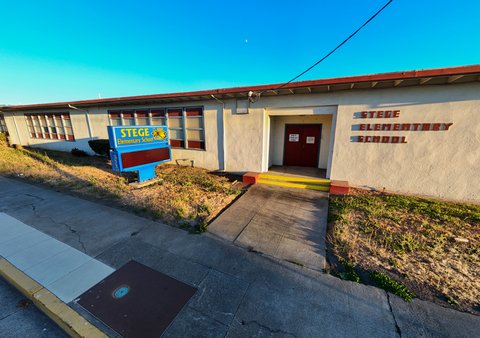
09 Feb Advocates File Lawsuits Against Bay Area Cities, Alleging Housing Plan Failures

(Special to Bay City News/New Africa)
By Joe Dworetzky
Bay City News Foundation
Affordable housing advocates have filed a bevy of lawsuits against cities in the Bay Area, alleging that each failed to meet a statutory deadline of Jan. 31 for revising its local housing plan to accommodate its share of regional housing needs.
As of Friday, suits were filed in county courts against a dozen Bay Area cities, including Burlingame, Palo Alto, Cupertino, Martinez, Belvedere, Richmond and Novato.
Sonja Trauss, executive director of YIMBY Law, a plaintiff in a number of the cases, said in a statement, “There’s no excuse for these cities to be in violation of state law. Cities have had years to plan for this … These cities are trying to push the responsibility onto other communities and avoid having to welcome new neighbors. It’s time for them to be held accountable.”
The lawsuits seek court orders compelling each of the cities to revise the “housing element” in its general plan as required by state law, and declaring that each non-compliant city will suffer a statutory penalty that will make it harder for it to exclude housing by relying on local zoning rules.
A housing element is a section of a municipality’s general plan that makes “adequate provision” for the housing needs of “all economic segments of the community.”
The housing element is crucial part of an intricate state-local statutory scheme for anticipating and providing for the housing needs of a region. In the Bay Area, with its chronic shortfall of affordable housing, the scheme is essential to widely sharing the burden of accommodating more housing.
Land use matters — zoning, construction codes, etc. — are primarily local issues. However, in California, the housing needs of a region, particularly the need for affordable housing, are determined on a regional basis and then implemented in a coordinated way by municipalities throughout the region.
A central player in the process is the California Department of Housing and Community Development, which determines the housing need allocation for a region.
Once the regional need is determined, the regional council of governments — in the Bay Area, the Association of Bay Area Governments, a governmental organization that includes nine counties and more than 100 cities — allocates the overall need among its member governments.
Each of the local governments then must update the housing element in its general plan to provide for its allocated share of needed housing.
The housing element, as revised, has to identify enough land that is zoned to accommodate the need. If the zoned capacity isn’t enough to meet the share, the municipality has to rezone enough land to meet the need.
In this way, the housing need is allocated regionwide and the affected municipalities make possible its implementation by facilitating any needed zoning changes to accommodate the expected development.
Actual development falls largely to private developers, but by making sure there is enough zoned capacity, the housing element facilitates projects being successfully sited and built.
But what happens is one or more of the local governments fails to meet its deadline for revising its housing element?
The statute attempts to make that an unattractive option by empowering any interested party to sue a non-compliant city and obtain an order requiring the municipality to revise its housing element. The plaintiff can also recover its cost of suit and reasonable attorney fees.
To put more teeth in the remedy, the statute also contains a penalty provision designed to usurp the local zoning prerogatives of a non-compliant city.
To that end, the statute says that a non-compliant city is barred from disapproving housing developments that meet certain criteria for affordability, even if they would otherwise violate the local zoning code. This section, sometimes called the “builder’s remedy,” allows projects to proceed that might otherwise be barred under the local zoning laws.
The builder’s remedy may seem an abstract issue, but it could have very real and tangible impact within a community that relies on zoning laws to control new projects, particularly those that might be perceived as unattractive if sited in affluent neighborhoods.
Should a developer take advantage of the remedy, a new project that would otherwise be impossible under local zoning rules might have clear sailing to move ahead.
The plaintiffs in the newly filed cases are housing advocacy organizations. Their suits are intended to call out cities that are slow-walking or foot-dragging or simply refusing to fulfill their responsibilities to revise their housing elements to accommodate their fair share of needed housing.
To light a fire under non-compliant cities, the suits ask the various state courts to “declare” that each defendant city is subject to the builder’s remedy. How that will play out is unclear, but seems certain to generate more litigation.
Moreover, the dozen suits that have been filed to date are likely not all that are to come. Reportedly, many more Bay Area cities failed to meet the statutory deadline.
According to a statement by the plaintiffs, “The initial lawsuits focus on cities with a long history of exclusionary housing practices, cities that adopted housing elements unlawfully, and localities that have made little progress in developing their draft housing elements. The organizations will continue to file suits in the coming weeks, prioritizing cities with the most egregious violations.”
Copyright © 2023 Bay City News, Inc. All rights reserved. Republication, rebroadcast or redistribution without the express written consent of Bay City News, Inc. is prohibited. Bay City News is a 24/7 news service covering the greater Bay Area.






No Comments